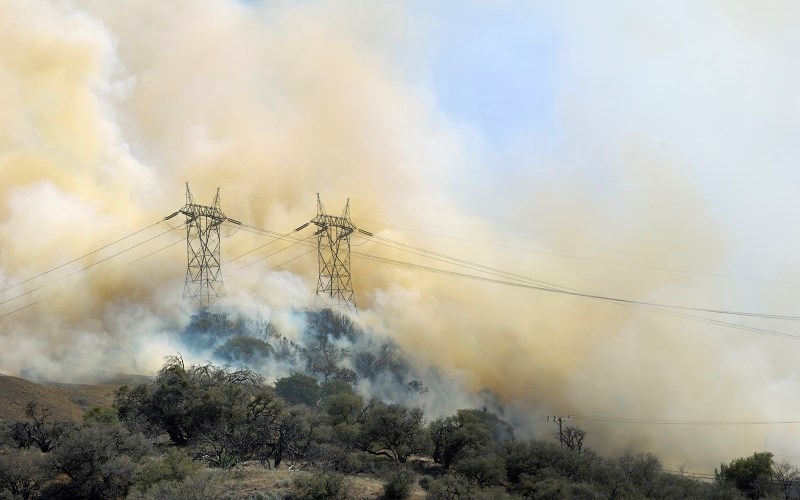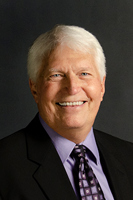

When I was a kid, growing up in a small town in the mountains of Colorado, California was a fantasyland. It held the promise of sunshine, beaches, and Disneyland. It seemed like a paradise, almost out of the reach of mere mortals. It was a place one could only read about and dream about, but to actually live there seemed like something that could only happen in fairy tales.
Well, whatever California was in reality or mere imagination, it is no more. It is now the home of the largest homeless population in America, 20% of all of America’s poor, and the highest poverty rate in the country. It’s now a state that people want to flee from rather than flee to.
What happened? That’s easy - politicians happened. But not just any politicians, but politicians of the worst sort, regressive politicians. They fancy themselves progressives, but in truth, they want to drag everyone backward quite literally to the Dark Ages.
Regressive politicians now have a supermajority, a veto-proof majority, in both houses of the California legislature, and a regressive governor who will sign any addle-brained legislation they send his way.
Consequently, California has virtually become a Third World country. The latest manifestation is that millions of Golden Staters are living in the dark. To preempt another wildfire disaster, PG&E, one of the largest utilities in the nation, shut off the electricity to people living in 34 counties in central and northern California, including the San Francisco Bay Area, one of the most densely populated parts of the country. The impact on the state economy could be as high as $2.6 billion.
Sparks from fallen power lines were blamed for last year’s mass fires which ravaged communities and killed people. The utility has been blamed for more than two dozen wildfires in the past few years, with a death toll of nearly 100 people, and the company has gone bankrupt trying to placate furious residents.
PG&E customers already pay among the highest rates in America. Fixing all the problems with their transmission lines may cause rates to spike by 400%. And opposition to logging and prescribed burns in California forests has left the state with 147 million dead trees just ready to burst into flame.
Naturally, the politicians who have created this disaster are happy to let PG&E take the blame, and it has, with people vandalizing its offices and shooting up its trucks.
Last year, Northern California’s Carr Fire killed six people, two of them firefighters, and claimed more than 700 homes and 100,000 acres. Naturally, the Sacramento Bee, without a shred of evidence, blamed the whole thing on global warming.
The Bee went on to blame carbon emissions from tailpipes, even though CO2 has an undetectable influence on global temperatures. Besides which, it’s plant food and not a pollutant at all. It’s a gas that makes vegetation on earth possible, as trees absorb it and release the oxygen we breathe. In other words, eliminate CO2, and you eliminate human beings.
The real culprits are environmentalists and the politicians who do their bidding. The problem is land-use policies that prohibit common-sense land management policies like thinning forests, reducing the fuel load on the forest floor, creating firebreaks, and building access roads - all of which logging companies will do for free in exchange for access to timber.
Decade upon decade of no-use, no-touch policies and a mindless obsession with renewables have made things untenable. PG&E has short-sheeted safety upgrades and repairs so it can pump billions into green energy and subsidies for electric cars. Long term contracts for overpriced renewable energy, cost PG&E $2.2 billion every year. Federal funds set aside to manage forests have been redirected to fire suppression, leading to exploding budgets for putting out fires.
Regulations on logging are so severe that employment in the timber industry has collapsed and is now half what it was at the turn of the century. We now import our lumber from Canada and China while our forests decay and the combustible fuel load soars.
This leads to forest fires that burn so hot they sterilize the soil, making regrowth difficult. Hotter fires, of course, are more difficult to bring under control and pose a greater threat to lives and houses. Many Californians who moved to what is called the Wildland-Urban Interface (WUI) now can no longer even buy fire insurance. If you can’t buy fire insurance, you can’t get a mortgage.
Chuck Devore writes:
In 2001, George E. Gruell, a wildlife biologist with five decades of experience in California and other Western states, authored the book, “Fire in Sierra Nevada Forests: A Photographic Interpretation of Ecological Change Since 1849.” Gruell’s remarkable effort compared hundreds of landscape photographs from the dawn of photography with photos taken from the same location 100 years later or more. The difference was striking. In the 1850s and 1860s, the typical Sierra landscape was of open fields of grass punctuated by isolated pine stands and a few scattered oak trees. The first branches on the pine trees started about 20 feet up—lower branches having been burned off by low-intensity grassfires. California’s Native American population had for years shaped this landscape with fire to encourage the grasslands and boost the game animal population.
Maybe in honor of Indigenous Peoples’ Day, we should borrow some of their forest management practices. Since federal forests have not been managed for decades, their economic value has been reduced to zero in many cases, and they pose a threat to adjacent private forests.
There was a time when the wood waste from California’s timber operations provided fuel for renewable biomass-powered electric generating plants. But no more. What once was used to heat homes is now consumed, along with the homes themselves, in catastrophic fires.
When un-thinned forests burn they release far more greenhouse gasses into the atmosphere than the thinning created in the first place. Refusal to thin forests is a disaster for the environment. Last year, wildfires produced more CO2 than all the state’s businesses, homes and farms combined.
Not only are things bad now, but they are also getting worse by the day. For instance, because politicians have placed the priority on renewable energy sources, longer and more vulnerable power lines have been built to get energy from windmill farms, which have to be located in remote areas because their footprint is so large.
Trendy Californians are learning to their dismay that their solar panels don’t generate a single watt of usable electricity in the dark, which is right when they need it. Solar batteries can only charge homes for about a day during a blackout. So paradoxically, Californians have been driven back to relying on fossil fuels, using oil lamps and generators powered by gasoline, propane, or diesel.
Environmental regulators claim that carbon from burned trees is more “natural” than carbon from combusted fossil fuels. As one observer pointed out, it sounds like they’ve inhaled too much of their own smoke.
The author may be contacted at bfischer@afa.net

